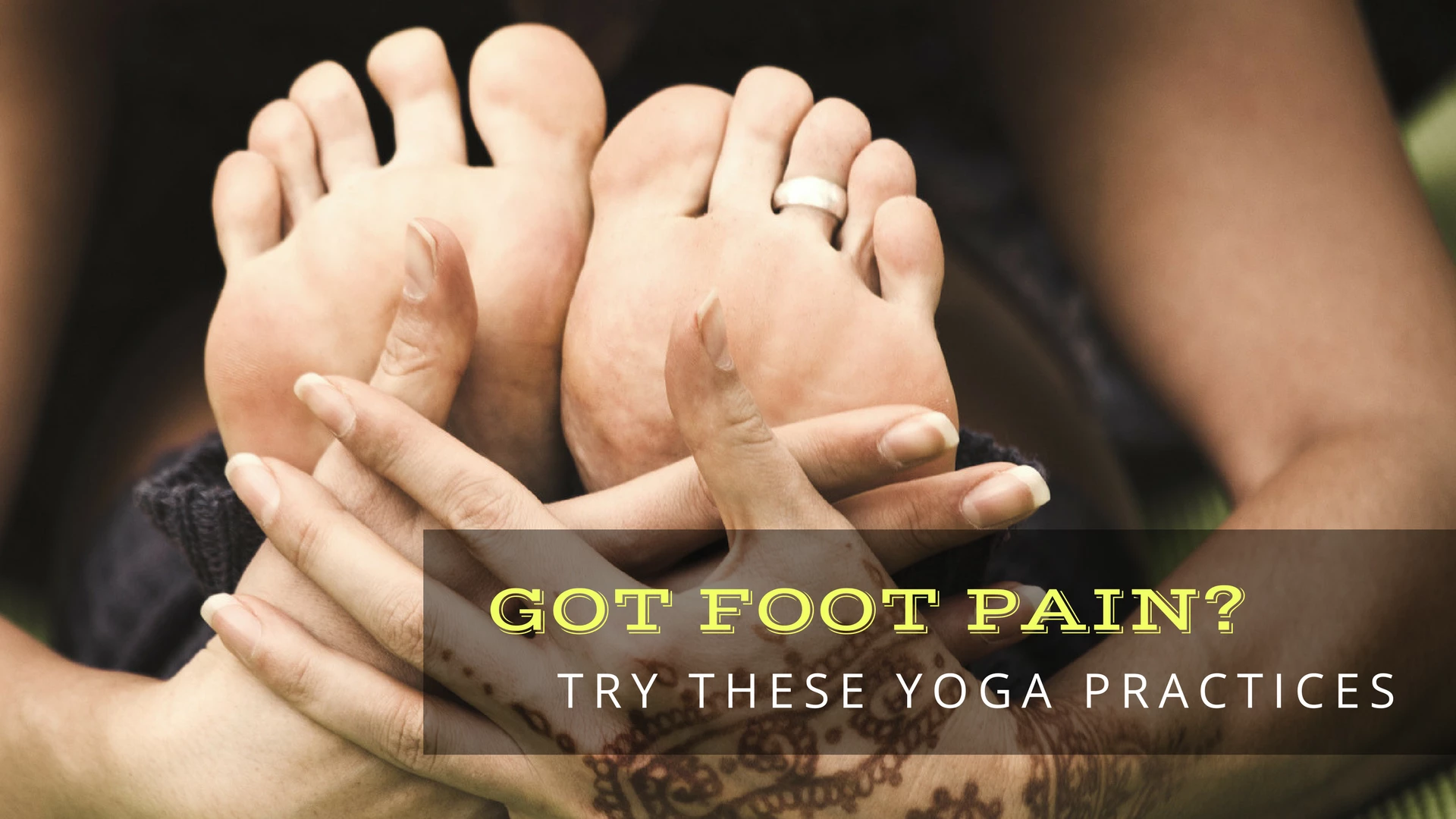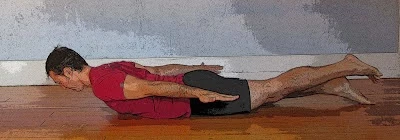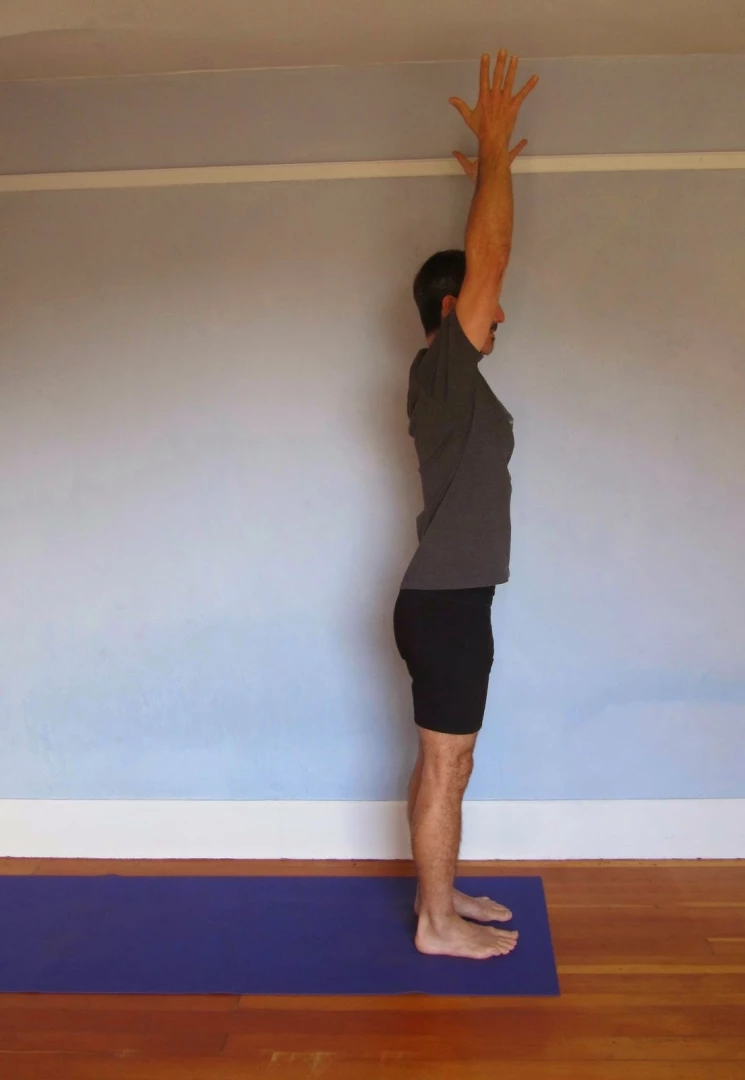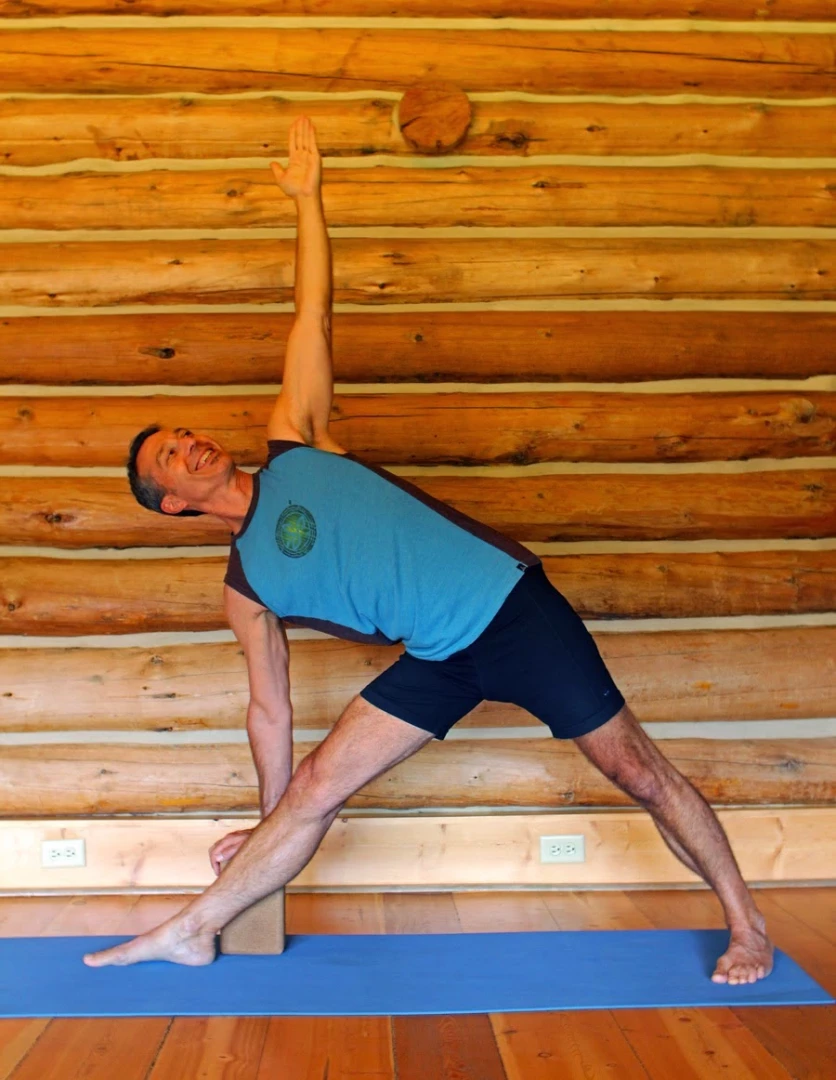Got Foot Pain? Try These Yoga Practices

The feet are an incredibly complex part of the body. There are 52 bones in the feet, each with approximately 33 joints, each of which can move in multiple directions. The possible number of distortions of the foot is enormous, something on the order of 8 x 10 to the 36th power.
In contrast to the foot’s huge variety of possible shapes and movements, we usually wake up in bare feet for just a few minutes in the morning and then jam our feet into shoes all day, which protects the feet for sure but limit movement dramatically.
So the first wonderful thing about practicing yoga is that you liberate your feet from shoes for however long your home practice is each day. In the context of painful feet, it may be a great starting place to do yoga practices that are non-weight bearing since things like brisk walking might be influencing the persistence of pain.
Yoga for Happy Feet
A good place to start with a yoga practice to keep your feet healthy would be with “warm-up” practices that involve lying on your back or belly and moving your limbs and feet around. An example would be Viparita Karani (Legs Up the Wall Pose), in which you could add movements of your feet and ankles to promote mobility of the joints and soft tissues of your feet. Other examples of poses where there is no or very little pressure on your feet include Parvrtta Balasana (Thread the Needle Pose), Salabasana (Locust Pose) (pictured below), and Jathara Parivartanasana (Revolved Belly Pose).
In all these poses, you can deliberately choose how you want to position your feet and ankles—whether you want to spread or curl your toes or vary other foot movements and positions—to bring greater awareness to how your feet are doing moment to moment. Once you are comfortable in these poses and your foot pain doesn’t flare, you are ready to move on.

Mild Weight-Bearing Yoga Poses
There are several basic yoga poses that begin to require more of your feet in terms of dealing with forces to the soles, the tops, and the edges of your feet. As you introduce this new group of poses, you will again be monitoring how your feet respond during the practice, as well as after the practice, such as overnight. Some of my initial choices include:
1. Supta Padangustasana (Reclined Leg Stretch Pose)
2. Setubanda Sarvangasana (Bridge Pose)
3. Sukasana (Seated Cross-Legged Pose)
4. Baddha Konasana (Cobbler’s Pose)
With Reclined Leg Stretch Pose (below), you are still not bearing weight, but you are bringing pressure onto the sole of your foot with the strap. You can vary the location of the strap; I like the heel pad, the midfoot, or the ball of the foot. You can vary the intensity of the pull of the strap to gauge how much your foot can handle.

With Bridge Pose, you are beginning to bear weight on your feet, but not your entire body weight, so this pose provides a good way to test the waters to see what your feet are ready to handle. The other seated poses put a bit of pressure on different parts of your feet and can help reveal areas of ongoing tenderness that might need a slower approach towards full function.
Full Weight-Bearing Yoga Poses for Feet Strengthening
When you are feeling ready to stand up and see how your feet handle more challenging situations, you can begin to explore the basic two-legged standing poses. Tadasana (Mountain Pose) (below) and all of its variations—arms overhead, side bending, and so on—are the starting place and a good home base to return to for this group of poses.

From there, move on to the classic two-legged standing poses, such as Trikonasana (Triangle Pose) (pictured below), Virabhadrasana I and II (Warrior I and II), Utthita Parsvakonasana (Extended Side Angle Pose), Parsvottanasana (Pyramid Pose), and Prasarita Padottanasana (Widespread Standing Forward Bend). Each of these poses will bring slightly different challenges and forces to your feet and ankles. You might add them gradually over time and assess how each one affects your feet.

As poses on two feet are becoming easier, add more challenge by working on one-legged poses, such as Vrksasana (Tree Pose), Ardha Chandrasana (Half-Moon Pose), Garudasana (Eagle Pose), Virabhadrasana III (Warrior III Pose) (pictured below) and Natarajasana (Dancer Pose) (Natarajasana). Be willing to go more slowly with these poses, however, as they will focus more force and pressure onto your feet and ankles and may require more time and attention.
Dynamic Movements for Healthy Feet
In real life, we move around on our feet quite a bit, walking, occasionally squatting, and periodically dancing, cycling, or running. You can ready and train your feet for these variable movements by practicing dynamic yoga sequences. The most obvious choices are Surya Namaskar (Sun Salutations) and Chandra Namaskar (Moon Salutations), but I suggest that you can also allow yourself some creative license to invent your own dynamic movement using yoga poses. Keep a playful yet focused attention as you move in and out of various yoga poses with a clear awareness of your feet.
Want more relief for foot pain? Try these suggestions from YogaUOnline and writer Jennifer Williams-Fields: Six Yoga Poses for Achy Feet.
Want to deepen your practice? Join Dr. Baxter Bell on our Premium Practice Channel.
Reprinted with permission from YogaforHealthyAging.blogspot.com
Photos courtesy of Melina Meza
 Baxter Bell, MD, is a yoga teacher and educator, physician, and medical acupuncturist. These days, he focuses on teaching yoga full time, both to ordinary students of all ages and physical conditions and to the next generation of yoga teachers, to whom he teaches anatomy and yoga therapy along with his accessible, skillful style of yoga. Baxter brings a unique perspective to his teaching, combining his understanding of anatomy and medicine with his skill at instructing people from all walks of life and all levels of ability. Baxter is the co-founder and writer for the popular Yoga for Healthy Aging blog, where he shares his knowledge of medical conditions, anatomy, and yoga with practitioners and teachers across the world. In addition to being a frequent presenter at Yoga Journal Alive events and yoga conferences such as IAYT’s SYTAR, he is often quoted as an expert on yoga and health by major national news outlets such as The Washington Post and Wall Street Journal. To learn more, visit www.baxterbell.com, www.yogaforhealthyaging.blogspot.com, and his YouTube channel, Baxter Bell Yoga.
Baxter Bell, MD, is a yoga teacher and educator, physician, and medical acupuncturist. These days, he focuses on teaching yoga full time, both to ordinary students of all ages and physical conditions and to the next generation of yoga teachers, to whom he teaches anatomy and yoga therapy along with his accessible, skillful style of yoga. Baxter brings a unique perspective to his teaching, combining his understanding of anatomy and medicine with his skill at instructing people from all walks of life and all levels of ability. Baxter is the co-founder and writer for the popular Yoga for Healthy Aging blog, where he shares his knowledge of medical conditions, anatomy, and yoga with practitioners and teachers across the world. In addition to being a frequent presenter at Yoga Journal Alive events and yoga conferences such as IAYT’s SYTAR, he is often quoted as an expert on yoga and health by major national news outlets such as The Washington Post and Wall Street Journal. To learn more, visit www.baxterbell.com, www.yogaforhealthyaging.blogspot.com, and his YouTube channel, Baxter Bell Yoga.




